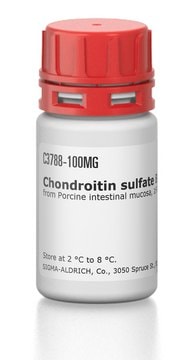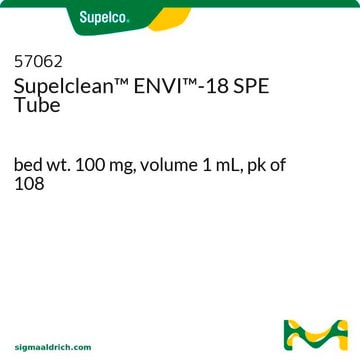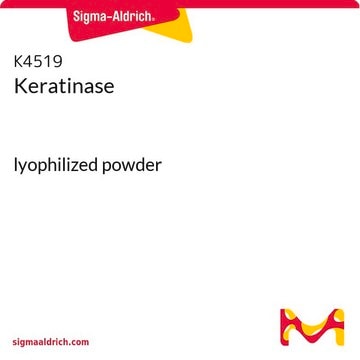C8058
Chondroitinase B from Flavobacterium heparinum
lyophilized powder (with BSA as stabilizer)
Synonim(y):
Chondroitin sulfate B lyase
About This Item
Polecane produkty
pochodzenie biologiczne
bacterial (Flavobacterium heparinum)
Poziom jakości
białko sprzężone
(Glucosaminoglycan)
Postać
lyophilized powder (with BSA as stabilizer)
Warunki transportu
dry ice
temp. przechowywania
−20°C
Powiązane kategorie
Zastosowanie
Działania biochem./fizjol.
Definicja jednostki
Hasło ostrzegawcze
Warning
Zwroty wskazujące rodzaj zagrożenia
Zwroty wskazujące środki ostrożności
Klasyfikacja zagrożeń
Eye Irrit. 2
Kod klasy składowania
13 - Non Combustible Solids
Klasa zagrożenia wodnego (WGK)
WGK 3
Temperatura zapłonu (°F)
Not applicable
Temperatura zapłonu (°C)
Not applicable
Środki ochrony indywidualnej
Eyeshields, Gloves, type N95 (US)
Certyfikaty analizy (CoA)
Poszukaj Certyfikaty analizy (CoA), wpisując numer partii/serii produktów. Numery serii i partii można znaleźć na etykiecie produktu po słowach „seria” lub „partia”.
Masz już ten produkt?
Dokumenty związane z niedawno zakupionymi produktami zostały zamieszczone w Bibliotece dokumentów.
Klienci oglądali również te produkty
Produkty
Uncover more about glycosaminoglycans and proteoglycans including the structure of glycosaminoglycans (GAGs), the different types of GAGs, and their functions.
Dowiedz się więcej o glikozoaminoglikanach i proteoglikanach, w tym o strukturze glikozoaminoglikanów (GAG), różnych typach GAG i ich funkcjach.
Glycosaminoglycans are large linear polysaccharides constructed of repeating disaccharide units.
Nasz zespół naukowców ma doświadczenie we wszystkich obszarach badań, w tym w naukach przyrodniczych, materiałoznawstwie, syntezie chemicznej, chromatografii, analityce i wielu innych dziedzinach.
Skontaktuj się z zespołem ds. pomocy technicznej











